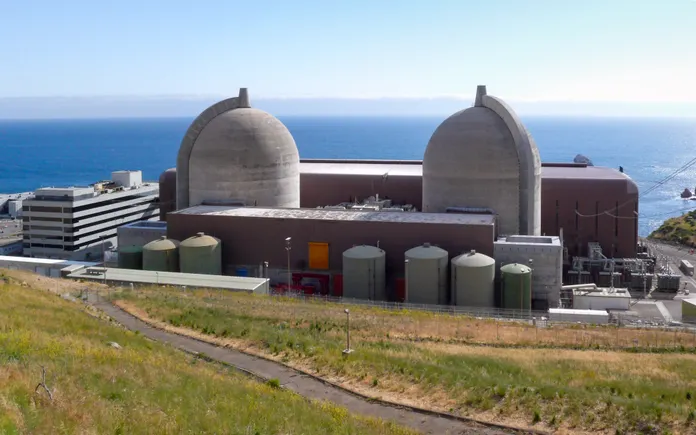Trump asks justices to lift judge’s order pausing mass federal layoffs
The Trump administration came to the Supreme Court on Friday afternoon, asking the justices to temporarily block an order by a federal judge in San Francisco that bars the Trump administration from implementing an executive order and a related memorandum calling for large-scale reductions in the federal workforce – the elimination of jobs, followed by the transfer or firing of the employees who did those jobs. U.S. Solicitor General D. John Sauer told the court that the order by Senior U.S. District Judge Susan Illston has “caused mass confusion throughout the Executive Branch.” “Neither Congress nor the Executive Branch has ever intended to make federal bureaucrats ‘a class with lifetime employment, whether there was work for them to do or not,’” Sauer wrote. According to law professor Stephen Vladeck, who closely tracks emergency applications at the Supreme Court, this was the Trump administration’s 15th request for emergency relief in the 16 weeks since Trump’s second inauguration. Yesterday the justices heard oral arguments in another of Trump’s request for emergency relief, asking the justices to partially block three orders by federal judges that bar the government from enforcing Trump’s Jan. 20 executive order ending birthright citizenship. The dispute in this case began after President Donald Trump issued an executive order in February instructing federal agencies to “promptly undertake preparations to initiate large-scale reductions in force (RIFs), consistent with applicable law.” Several labor unions, advocacy groups, and local governments went to federal court, seeking to bar the Trump administration from implementing both the executive order and a memo issued to federal agencies by the Office of Personnel Management and the Office of Management and Budget to carry out the order. Illston issued a temporary restraining order on May 9 that prohibited the Trump administration from planning any RIFs and proceeding with any existing RIFs, and she ordered the administration to provide the plaintiffs with documents related to the RIFs. (Illston has, Sauer noted, “temporarily paused” the disclosure requirement, although he added that she could “reinstate that order as early as next week.”) The Trump administration went to the U.S. Court of Appeals for the 9th Circuit, asking it to pause Illston’s order while it appealed. The court of appeals set a briefing schedule on the government’s stay request that will finish on May 22, one day before the TRO is slated to expire. Stressing that Illston had “entered a nationwide injunction that governs the personnel practices of 21 federal agencies, including 11 Cabinet-level agencies, and grants universal relief that far exceeds anything necessary to remediate the parties’ putative injuries,” Sauer urged the court to put Illston’s order on hold while the government’s appeal continues in the lower courts. He told the justices that the order “suffers from multiple fatal flaws.” Federal law, he contended, bars the plaintiffs from directly challenging the RIFs in federal court; they cannot do an “end-run” around that prohibition by instead asking a federal judge to pause implementation of Trump’s executive order and the OMB/OPM memo. The justices should also intervene because Illston’s order has caused “ongoing and severe harm” to the government, Sauer continued. In particular, he contended, it “has brought to a halt numerous in-progress RIFs at more than a dozen federal agencies, compelling the government to retain — at taxpayer expense — thousands of employees whose continuance in federal service is determined by agencies not to be in the government and public interest.” Finally, Sauer asked the justices to impose an administrative stay – that is, to temporarily pause Illston’s order while they consider the government’s request. “Every day that the district court’s order remains in effect,” he lamented, “a government-wide program to implement agency RIFs is being halted and delayed, maintaining a bloated and inefficient workforce while wasting countless taxpayer dollars.” The post Trump asks justices to lift judge’s order pausing mass federal layoffs appeared first on SCOTUSblog.
The Trump administration came to the Supreme Court on Friday afternoon, asking the justices to temporarily block an order by a federal judge in San Francisco that bars the Trump administration from implementing an executive order and a related memorandum calling for large-scale reductions in the federal workforce – the elimination of jobs, followed by the transfer or firing of the employees who did those jobs.
U.S. Solicitor General D. John Sauer told the court that the order by Senior U.S. District Judge Susan Illston has “caused mass confusion throughout the Executive Branch.” “Neither Congress nor the Executive Branch has ever intended to make federal bureaucrats ‘a class with lifetime employment, whether there was work for them to do or not,’” Sauer wrote.
According to law professor Stephen Vladeck, who closely tracks emergency applications at the Supreme Court, this was the Trump administration’s 15th request for emergency relief in the 16 weeks since Trump’s second inauguration. Yesterday the justices heard oral arguments in another of Trump’s request for emergency relief, asking the justices to partially block three orders by federal judges that bar the government from enforcing Trump’s Jan. 20 executive order ending birthright citizenship.
The dispute in this case began after President Donald Trump issued an executive order in February instructing federal agencies to “promptly undertake preparations to initiate large-scale reductions in force (RIFs), consistent with applicable law.”
Several labor unions, advocacy groups, and local governments went to federal court, seeking to bar the Trump administration from implementing both the executive order and a memo issued to federal agencies by the Office of Personnel Management and the Office of Management and Budget to carry out the order.
Illston issued a temporary restraining order on May 9 that prohibited the Trump administration from planning any RIFs and proceeding with any existing RIFs, and she ordered the administration to provide the plaintiffs with documents related to the RIFs. (Illston has, Sauer noted, “temporarily paused” the disclosure requirement, although he added that she could “reinstate that order as early as next week.”)
The Trump administration went to the U.S. Court of Appeals for the 9th Circuit, asking it to pause Illston’s order while it appealed. The court of appeals set a briefing schedule on the government’s stay request that will finish on May 22, one day before the TRO is slated to expire.
Stressing that Illston had “entered a nationwide injunction that governs the personnel practices of 21 federal agencies, including 11 Cabinet-level agencies, and grants universal relief that far exceeds anything necessary to remediate the parties’ putative injuries,” Sauer urged the court to put Illston’s order on hold while the government’s appeal continues in the lower courts. He told the justices that the order “suffers from multiple fatal flaws.” Federal law, he contended, bars the plaintiffs from directly challenging the RIFs in federal court; they cannot do an “end-run” around that prohibition by instead asking a federal judge to pause implementation of Trump’s executive order and the OMB/OPM memo.
The justices should also intervene because Illston’s order has caused “ongoing and severe harm” to the government, Sauer continued. In particular, he contended, it “has brought to a halt numerous in-progress RIFs at more than a dozen federal agencies, compelling the government to retain — at taxpayer expense — thousands of employees whose continuance in federal service is determined by agencies not to be in the government and public interest.”
Finally, Sauer asked the justices to impose an administrative stay – that is, to temporarily pause Illston’s order while they consider the government’s request. “Every day that the district court’s order remains in effect,” he lamented, “a government-wide program to implement agency RIFs is being halted and delayed, maintaining a bloated and inefficient workforce while wasting countless taxpayer dollars.”
The post Trump asks justices to lift judge’s order pausing mass federal layoffs appeared first on SCOTUSblog.




















































































































































